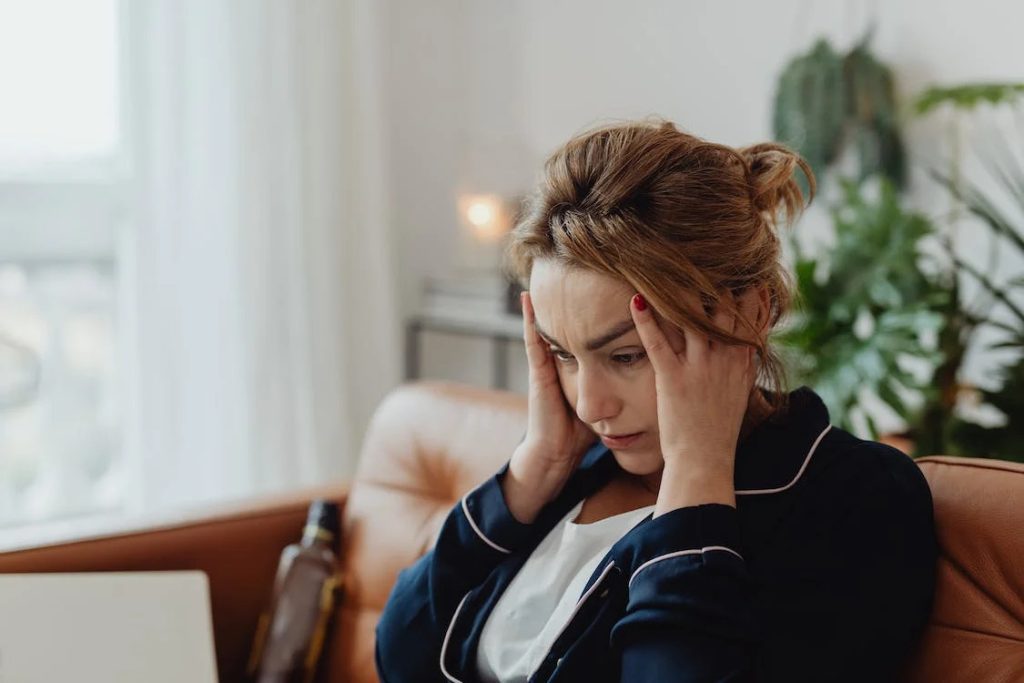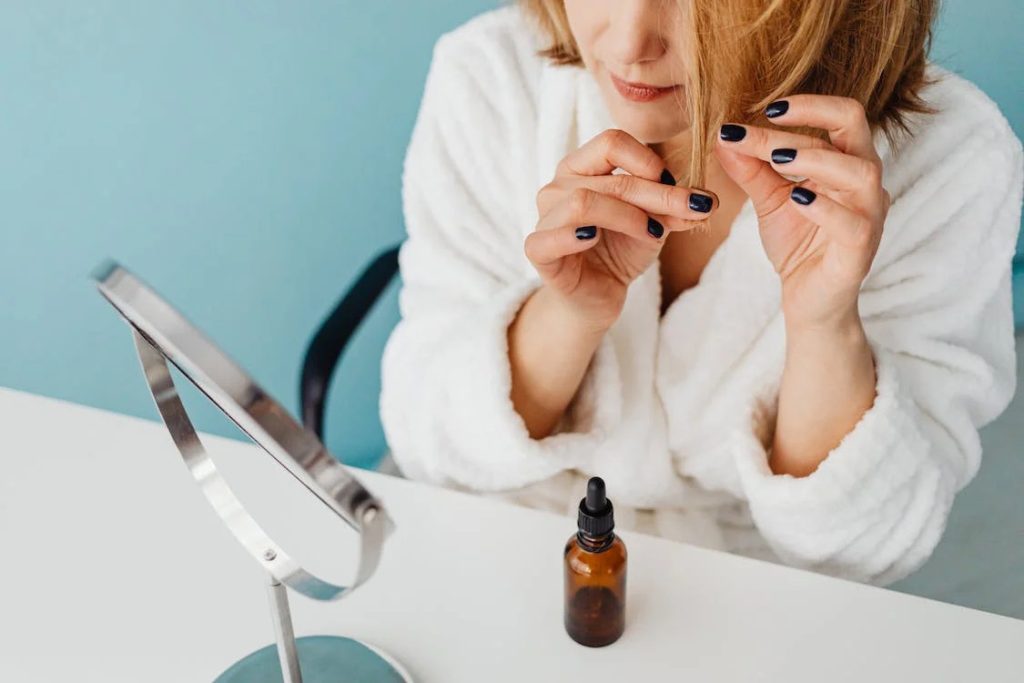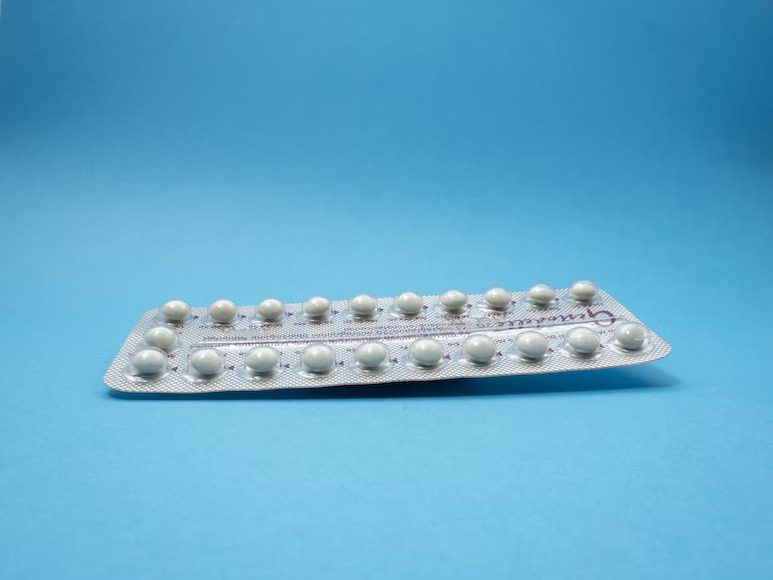Hair Loss in Women Over 40 – Causes and Treatments

Hair loss comes with emotional difficulty, but it can hit harder when you enter your 40s. However, hair loss in women over 40 is entirely natural and more common than you think.
A third of women nearing menopause experience hair thinning or bald spots, which worsens after entering menopause. While female hair loss in your 40s is normal, you don’t have to sit back and go through it.
Various treatments are available to slow hair loss and even restore your hair. In this article, we will tell you all about them. So keep reading to learn more about the causes of hair loss and how you can reverse it.
Symptoms of Hair Loss in Women Over 40
You may not notice your hair loss at first, as hair loss in women is typically gradual and more subtle than in men. Losing between 50 to 100 hairs daily is also normal and should not necessarily be a cause for concern. Instead, look for the following signs that your rate of hair loss is increasing:
- There is more hair breakage
- Your hairbrush needs more frequent cleaning
- There are more hair strands in the shower drain
- Your clothes and pillows have more hair on them than usual
Hair loss often progresses slowly, so it can take some time before you notice changes in the mirror. Once you do, you may see your part widening, your hair looking thinner, and bald patches appearing near the crown of your head.
It should also be noted that hair loss in women over 40 can even occur on other parts of the body, like the arms, legs, eyebrows, and eyelashes.
Causes of Female Hair Loss in the 40s
Several factors can cause hair loss in females over 40. We’ll discuss some of them below:
Hormonal Changes
As you near menopause, your estrogen levels drop while your androgenic hormones rise. Since the proper balance of these hormones is essential to healthy hair growth, this change can lead to hair that grows thinner and more slowly.
This type of hair loss in women over 40 can occur at any stage of menopause. You might experience it during perimenopause, menopause, or post-menopause. Other conditions associated with hormonal imbalances may also increase the risk of hair loss. These include hypothyroidism and polycystic ovary syndrome (PCOS).
Stress
Stress is another factor associated with hair loss, including female hair loss in the 40s. Scientists do not know exactly why stress is linked to hair loss, but it may be related to changing levels of stress-associated hormones such as cortisol.
Hair loss that is associated with stress can be gradual or sudden. In some cases, significant physical or emotional stress can lead to a condition called telogen effluvium (TE). This condition causes rapid hair loss, often around three months following a distressing event.
The good news, however, is that stress-linked hair loss is often not permanent. In many cases, hair will regrow if stress is better controlled.
Nutritional Deficiencies
Deficiencies in several key micronutrients, such as iron, zinc, niacin, selenium, vitamin D, and biotin, have been associated with hair loss in women over 40. These nutritional deficiencies are often a result of crash dieting or otherwise highly restrictive diets.
It is also thought that a poor or restrictive diet can lead to increased hair loss due to inadequate protein, healthy fats, and calories in general.
Genetics
Female hair loss in the 40s often has an underlying hereditary cause. Women with a history of male or female hair loss in their family are more likely to experience hair loss themselves due to their underlying genetic makeup.
Hair loss that is primarily hereditary often follows a predictable pattern, including diffuse thinning and widening of the hair part.
Hair Styles and Treatments
Tight hairstyles that constantly pull on hair roots, such as buns, ponytails, and tightly braided hair, can damage the hair follicles and lead to hair loss. This specific type of hair loss is called traction alopecia. Wearing these hairstyles frequently earlier in life can lead to more visible hair loss in women over 40.
Some types of hair treatments, like perms, bleach, and heat-based styling tools, may damage the hair or scalp and lead to hair loss. This damage can accumulate over time and have a more noticeable effect later in life.
Autoimmune Diseases
Hair loss can also be a result of various autoimmune conditions. The most common type of hair loss that is autoimmune in origin is alopecia areata. This condition can arise and cause hair loss in men and women at any age, including women over 40.
Treatments for Hair Loss in Women Over 40
There are a number of treatment options available for female hair loss. These are the most common treatments for female hair loss in the 40s.
Prescription Medications
Different prescription medications are available to help you combat hair loss. Some of them include the following:
Finasteride
Finasteride promotes hair regrowth by blocking the effects of androgen hormones. It has been most commonly sold under the brand name Propecia. Finasteride is specifically approved only for male pattern hair loss. However, research shows it can also be effective for female pattern hair loss, and doctors will sometimes prescribe it off-label for this reason.
Spironolactone
This medication is usually prescribed for acne treatment, but studies show it can also be effective for hair loss in women over 40.
Minoxidil
Minoxidil is an over-the-counter medication often sold under the brand name Rogaine. It is FDA-approved to treat both male and female pattern hair loss.
Minoxidil has been proven to be effective in many studies. This medication works by expanding blood vessels and increasing blood flow to the follicles. It’s available in foam, liquid, and spray forms at different strengths.
Hormone Replacement Therapy
Hormone replacement therapy (HRT) is another solution that can help female hair loss in the 40s. Since hormonal imbalances are prevalent before, during, and after menopause, HRT may be beneficial.
However, doctors recommend HRT for other symptoms of menopause. So this may not be the best option for everyone.
Hair Transplant
Hair transplant is a surgical procedure that can help with some cases of hair loss in women over 40. It involves moving healthy hair follicles from parts of the scalp with thicker hair to areas with hair thinning and balding. Hair transplant is most often used to treat pattern hair loss in men, but some doctors will perform it for women as well.
Microneedling
Microneedling is another potential treatment option for hair loss in women over 40.
It involves running a roller with tiny needles over your scalp, creating small punctures in the skin. It is thought to stimulate hair regrowth by promoting collagen formation, producing new blood vessels, and releasing growth factors. Studies have shown that microneedling can increase hair density and thickness.
Platelet Rich Plasma
Platelet-rich plasma (PRP) injection therapy is a minimally invasive procedure some doctors will perform for female hair loss in the 40s.
This treatment involves taking a sample of the patient’s blood, processing the blood to isolate certain beneficial compounds, and injecting the solution into the scalp. A number of studies have shown that PRP may be a promising treatment for both male and female pattern hair loss.
Low-Level Laser Therapy
Low-Level Laser Therapy (LLLT), also known as Photobiomodulation Therapy, is one of only two treatments cleared by the FDA to treat pattern hair loss in women. This makes it a great treatment option in many cases of female hair loss in the 40s.
LLLT works by activating cells of the hair follicles with gentle red laser light, allowing them to work more efficiently and produce thicker, healthier hair. LLLT has not only been proven effective in many clinical trials, but is also free from drugs or chemicals and is not associated with any serious adverse side effects.
How to Prevent Hair Loss at Home
While treatment is necessary, there are measures you can take to prevent further hair loss. Here are some things you can do at home:
- Get your nutrients! Most importantly, eat a healthy, balanced diet. You can also supplement with vitamins known to support hair growth.
- Control your stress as best as you can. This is, of course, much easier said than done. But healthy habits such as regular exercise or meditation may help you relax.
- Avoid tight hairstyles that may cause traction alopecia.
- Stay away from hair treatments that involve harsh chemicals or heat.
Regrow Your Hair With LaserCap
We are happy to offer one of the best treatment options for hair loss in women over 40: The Original LaserCap! LaserCap uses LLLT technology, FDA-cleared to treat pattern hair loss in men and women. Prescription-strength red laser light energizes dormant follicles, stimulating them to produce a fuller head of hair within four to six months of use.
Get your LaserCap today to start your journey towards thicker, healthier hair!






